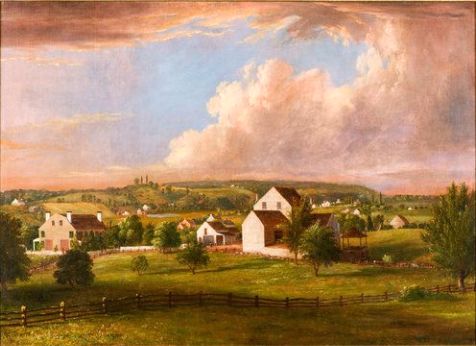
In January 1896, the tiny hamlet of Greenridge, Staten Island, was all a buzz over the reported sighting of a large, ferocious black bear. Doors were closed and barred at dusk, and guns and pistols were cleaned and loaded.
All those men who loved to tell their tall tales of bravery were oddly reluctant to venture alone over the country roads from Rossville to Richmond — even during daylight hours.
The story of the bear sighting originated with Greenridge resident David H. Cortelyou, a former Civil War veteran and army captain who owned a large farm and homestead on the Fresh Kills Road (today’s Arthur Kill Road). Many people had heard his war stories of valor, so they didn’t bother to question his tall tale about the large black bear.
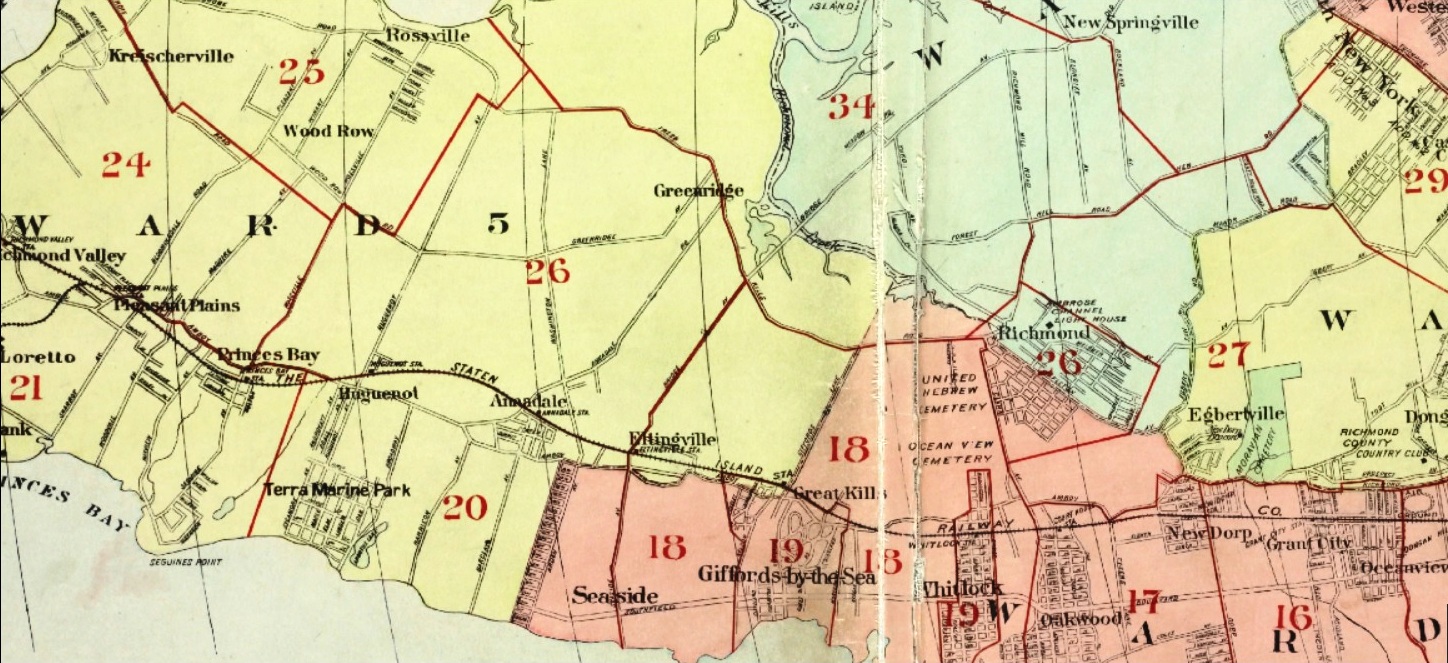
As the story goes, it was David’s 18-year-old son, Stephen, who first came upon the bear while walking along the road one night near the house. Stephen told his father that he had heard a strange noise in the woods; a moment later, a large dark animal emerged and ran after him, making a sound between a grunt and a bark. Maybe that was the first clue…
Grabbing their loaded shotguns and revolvers, David and his son went back outside and fired a few shots into the bushes. No animal appeared, so they went back indoors.
The next night, John Mahoney, the Cortelyou’s hired man, fired two shots at what he also thought was a bear. Again, no bear — or any other animal, for that matter — emerged from the woods.
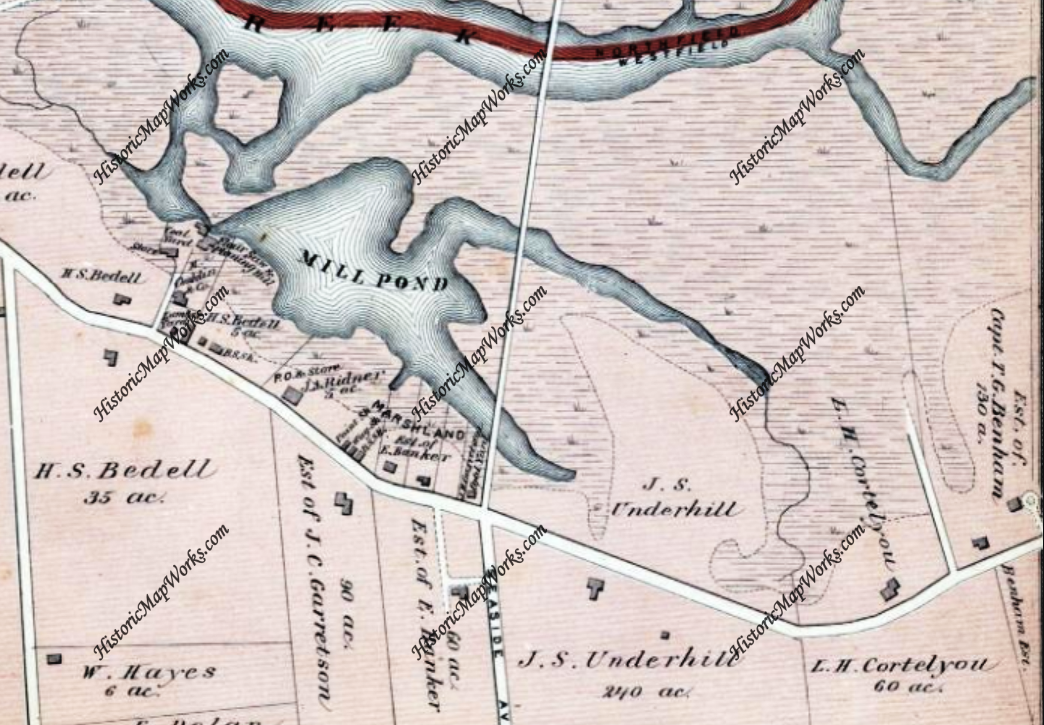
During the course of the week, rumors quickly spread of people having seen the bear in their barns or near their houses. For several days, hunting parties scoured the Greenridge woods for miles around in search of the elusive wild creature.
Over at James Carroll’s hotel for fishermen at Giffords-by-the-Sea, the bear was also a hot topic. On January 15, a band of men gathered at the hotel and pledged to catch it. In the party were Carroll; David Cortelyou; Tom Williams (aka The Cat); Eden Nolan, the sporting blacksmith of Greenridge; Tom Hogan; Tom Monaghan Tom Kenney; Gabe Gile; Bill King, the noted fox hunter of Richmond; and several other sporting men.
The brave men spent an hour loading their guns and revolvers and discussing plans for the hunt. Reaching the Cortelyou’s house just before dark, the party made their way through the snow in the bushes where the bear had last been seen.
Just a few minutes into the hunt, the men heard a muffled growl coming from the vicinity of George White’s farm. Williams climbed up a tree and another man fell onto his back and started kicking and screaming. Monaghan barricade himself against the fence and covered his head with his coat.
The other men ran down the road, leaving Cortelyou, Carroll, and King alone to face the ferocious creature…

The Cortelyou Family
The Cortelyou family of Staten Island and Long Island (also spelled Corteleau) have a long history in New York, dating back to 1652, when Jacques Cortelyou, a French Huguenot surveyor, arrived in America. In 1657, Jacques laid out the town of New Utrecht (Brooklyn) into 20 lots of 50 acres each, one of which he made his home, where he lived with his wife and four sons.
The first Staten Island Cortelyou of record was Jacques’s son Jacques Jr. He and his wife Jaccmynytie (Jemima) VanPelt had two children: a daughter, Deborah, born in 1720, and a son, Aaron, born in 1726. Aaron’s son Peter, born in 1768, and his wife, Emma Hillier, were the parents of Lawrence Hillier Cortelyou, who was born in 1802 in the house pictured above.
Lawrence Cortelyou was a grocer, farmer, and a county judge in New York, and one of the founders of the Richmond County Mutual Insurance Company. In addition to the farm at Greenridge, Lawrence owned the old Henry Seaman cottage at 218 Center Street in Richmondtown, now preserved and on display in Historic Richmond Town.
Lawrence Cortelyou died in the farmhouse in September 1884. His son David Heckle Cortelyou, born in 1849, took over the farm while still maintaining a residence on Manor Road in West New Brighton.
David Cortelyou was a Civil War veteran, having enlisted in the New York 6th Calvary (Company E) in 1861 and reaching the rank of major. He also served as a second lieutenant in the regular army at Kinney, Texas, where he was involved in several battles with the Native Americans. David retired from the army with honors in 1873 and returned to Staten Island, where he worked as a county clerk, the secretary of the Richmond County Mutual Insurance Company, and a part-time bear hunter.
Back to the Bear Hunt at the White Farm…

With guns in hand, Cortelyou, Carroll, and King pushed through the bushes and made their way toward the White farm. There, at the base of rock, they found one of George’s St. Bernard dogs. Apparently the dog had trailed some small animal to its nest under the rock and had been digging at the dirt to get at it.
The strange muffled growl the men had heard was not a bear, but the dog with its head in the hole.
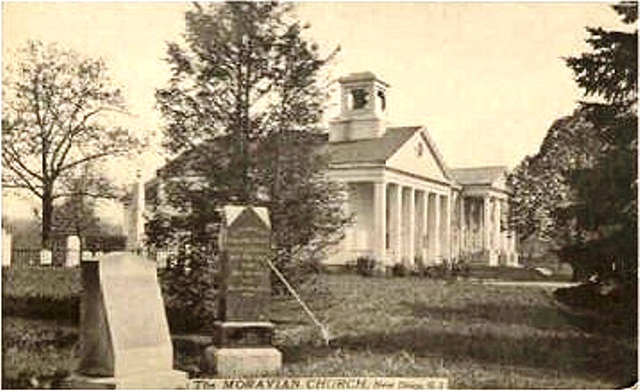
David Cortelyou died on June 8, 1912, and is buried with his family in the Moravian Church cemetery in New Dorp. Organized in 1763, the Moravian Church is the second-oldest church on Staten Island, preceded by St. Andrew’s Episcopal Church in Richmondtown. The present church, built in 1837, was designed by Jasper Cropsey. The building was modified in the 1950s, which is when the bell tower was replaced with the present steeple.
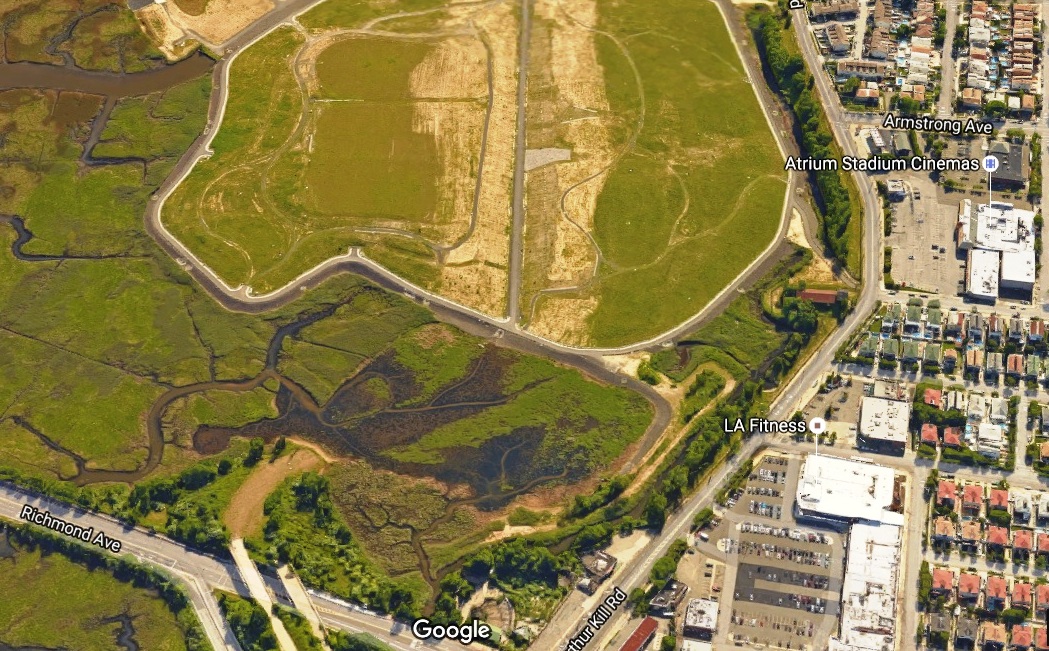
Here’s an aerial “Google Earth” view of the site of the old White and Cortelyou farms on Arthur Kill Road. Amazingly, much of the land on the north side of the road still remains vacant, and is probably very close to what it looked like 150 years ago during the great Greenridge bear hunt.
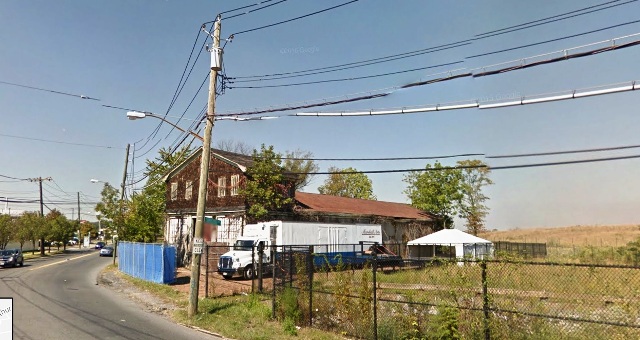
This old structure at the intersection of Arthur Kill Road and Cortelyou Avenue is right about on the spot of the old Cortelyou farmhouse. A housing development and strip mall occupy the rest of the old farm on the south side of the road (as seen above).
If you enjoy this bear tale, you may also enjoy reading another bear tale set in the Bronx in 1886.



